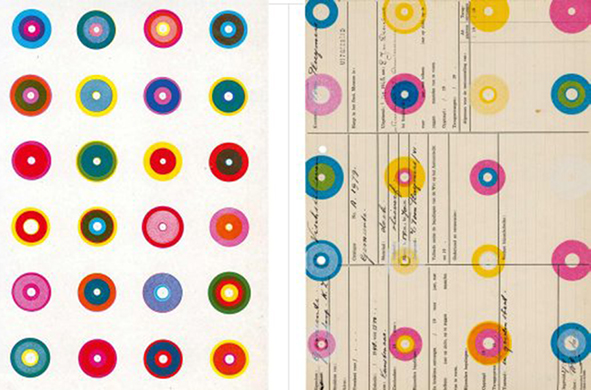Text message from TM to PW 21.18, 8 May 2017
Catalogue William Windham’s correspondence by constructing/extracting an inventory of recipients. Deadline 22 May
When I first read the second instruction set by T, I wanted to gain a clear understanding of the meaning of inventory, rather than making assumptions, therefore I chose to work with the
interpretation of an inventory as a tally.
Colour coding the individual recipients seemed an obvious way forward, but I wanted the colours to have a resonance with each person; taking inspiration from T’s previous working methodology I started to research all 36 recipients. Whilst Wikipedia was a quick, invaluable resource – many of the recipients were impossible to find, so it became clear that finding a colour that was relevant was going to be a challenge. After studying the work of both Karel Martens and Irma Boom, I started to consider how it maybe possible to combine graphic shapes or pattern with colour; to develop this idea further I turned to the letters themselves for visual clues.

Reading the paper by Kathy Corcoran (subject cataloging workshop, ARLIS/NA, L.A., 31 March 2001) entitled: ‘Many intricate and difficult problems that torture the mind – words of wisdom for art cataloguers in the real world’ – I was mindful of her statement:
Besides knowledge and skill at interpreting and applying rules, we need to call on our judgement,
experience, and intuition, and even occasionally our sense of aesthetics and of what ‘looks right’
to us.
Although written in relation to library cataloguing I chose to adapt the same approach – this gave me the necessary freedom and flexibility I needed to develop a colour coding system that was more abstract but still had some form of significance (however tenuous).
Whilst part of our research is to determine whether or not working independently will affect the outcome, by the second instruction I am conscious that because we know each so well, and talk regularly, it is difficult not to be aware of T’s various approaches and be influenced by her methods.

